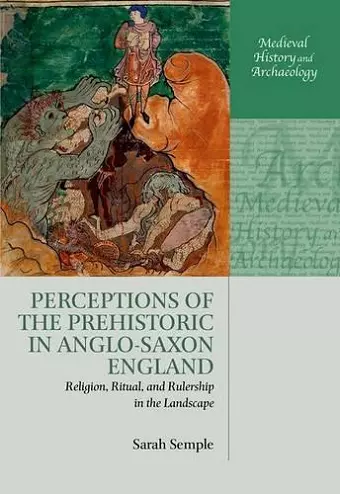Perceptions of the Prehistoric in Anglo-Saxon England
Religion, Ritual, and Rulership in the Landscape
Format:Hardback
Publisher:Oxford University Press
Published:24th Oct '13
Currently unavailable, and unfortunately no date known when it will be back
This hardback is available in another edition too:
- Paperback£41.99(9780198844112)

Perceptions of the Prehistoric in Anglo-Saxon England represents an unparalleled exploration of the place of prehistoric monuments in the Anglo-Saxon psyche, and examines how Anglo-Saxon communities perceived and used these monuments during the period AD 400-1100. Sarah Semple employs archaeological, historical, art historical, and literary sources to study the variety of ways in which the early medieval population of England used the prehistoric legacy in the landscape, exploring it from temporal and geographic perspectives. Key to the arguments and ideas presented is the premise that populations used these remains, intentionally and knowingly, in the articulation and manipulation of their identities: local, regional, political, and religious. They recognized them as ancient features, as human creations from a distant past. They used them as landmarks, battle sites, and estate markers, giving them new Old English names. Before, and even during, the conversion to Christianity, communities buried their dead in and around these monuments. After the conversion, several churches were built in and on these monuments, great assemblies and meetings were held at them, and felons executed and buried within their surrounds. This volume covers the early to late Anglo-Saxon world, touching on funerary ritual, domestic and settlement evidence, ecclesiastical sites, place-names, written sources, and administrative and judicial geographies. Through a thematic and chronologically-structured examination of Anglo-Saxon uses and perceptions of the prehistoric, Semple demonstrates that populations were not only concerned with Romanitas (or Roman-ness), but that a similar curiosity and conscious reference to and use of the prehistoric existed within all strata of society.
thought-provoking * Current Archaeology *
This book draws together many of the threads that Semple wove in previous article, and the result is simultaneously more comprehensive and wider in ambition ... [a] thoughtful and engaging volume * Stuart Brookes, Medieval Archaeology *
an authoritative volume and a powerful coherent analysis of the ways in which elements of the inherited landscape were viewed, ascribed meanings and used by early medieval communities. As such it goes beyond landscape studies into the archaeologies of belief and psychology. It will, rightly, become a fixed reference point for researchers and a primary source for students * Chris Scull, The Antiquaries Journal *
combines the author's previously published research with insights gained from ongoing work to develop a new and important synthesis which will set the tone for the debate from here on. The result is a testament to the value of landscape archaeology for our understanding of religious and political change in the later first millennium AD ... This book is a great step forward for Anglo-Saxon studies and early medieval archaeology in general. It shows the potential for our scattered and problematic data to be synthesized into something approaching a full ethnography of Anglo-Saxon England. Semple's expression is never dull or obtuse, and her ability to wield such a broad range of comparanda is remarkable. The organization of the data in clear tables and appendices ensures this will continue to be an invaluable resource for future study. * Adrián Maldonando, European Journal of Archaeology *
important, long-awaited study ... Rich in examples, well illustrated for an academic book (a paperback is richly deserved) and clearly written, it constantly fascinates. Crisp sections package the narrative ... this is a constantly stimulating study, whether for prehistorians or medievalists. * Paul Stamper, British Archaeology *
a truly interdisciplinary project ... Semple is able to paint a much more complex and detailed picture of her topic than would be possible based on the archaeological evidence alone ... this important and informative volume clears the way for subsequent work to be even more specific and definitive within the broad parameters established here. In so doing, it lays the crucial groundwork for a better, more thorough, and more interdisciplinary understanding of how the Anglo-Saxons apprehended and appropriated the past of the lands they settled. * Renee R. Trilling, American Historical Review *
ISBN: 9780199683109
Dimensions: 249mm x 184mm x 24mm
Weight: 880g
352 pages